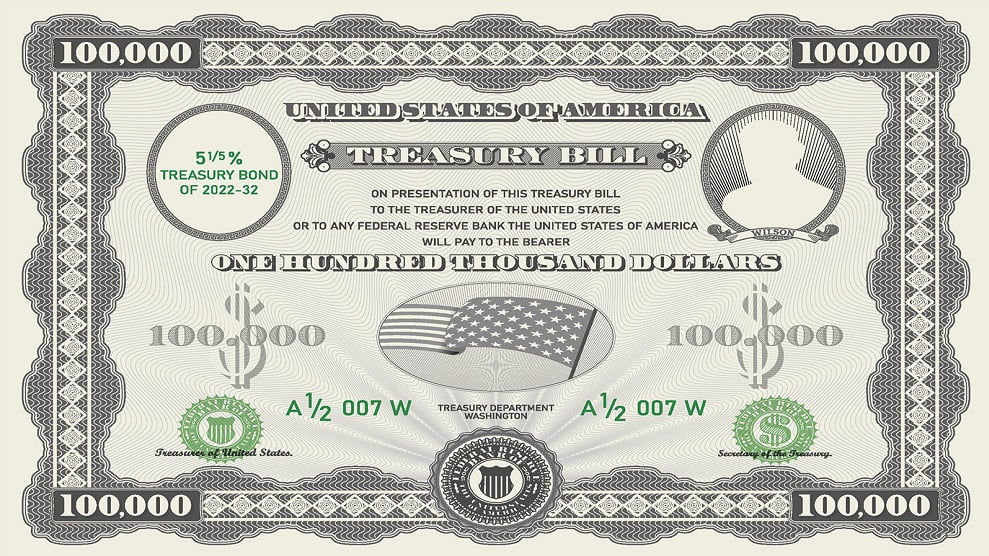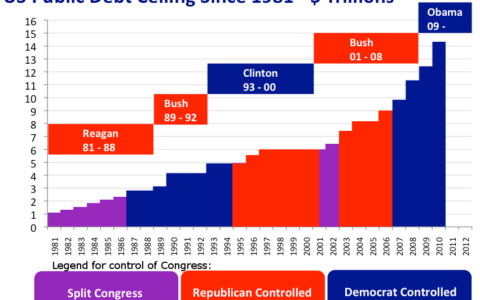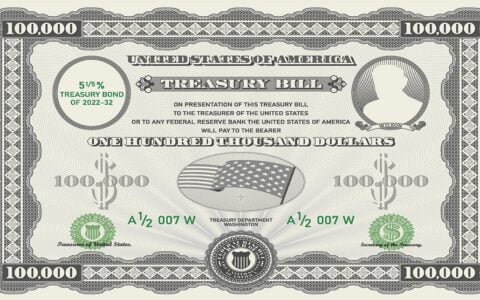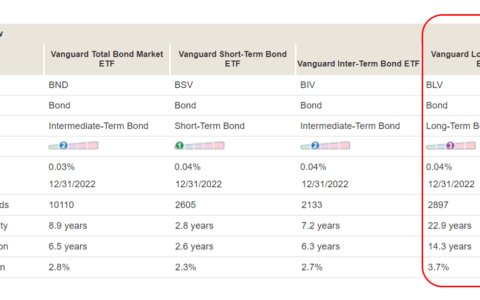U.S Treasury bonds have long been esteemed by both institutional and individual investors for their attractive traits of minimal default risk, reliable interest payouts, and a sanctuary from the often tumultuous stock markets. Presently, with interest rates hovering near historically normal levels, Treasurys are offering yields competitive with riskier assets, such as stocks and corporate bonds. Therefore, it’s a fitting time to gain insight into Treasurys and contemplate their potential place in your income investing plan.

A Primer on Treasurys
Treasurys are bonds issued by the U.S government, specifically, the Treasury department. Each bond is essentially a loan made by the bond purchaser to the government to finance its operations and services. The bond buyer, in return, is promised the repayment of the loan plus interest at a future date.
Three Varieties of Treasurys
Uncle Sam offers you three flavors of Treasury securities to choose from—Notes, Bonds, and Bills. The distinction between notes and bonds lies in the maturity period. Notes have maturities ranging from 1 to 10 years, whereas bonds can go up to 30 years. Both types yield interest every six months at a rate set at the time of purchase, which remains unaltered irrespective of the fluctuations in the rates of new issuances.
Treasury Bills, on the other hand, do not offer regular interest payouts. They are sold at a discount to their face value and mature to their full face value in 4 to 12 months. The difference between the discounted purchase price and the face value at maturity represents the total interest paid in a lump sum, making them a viable option for investors not wishing to track regular coupons.
The Benefits of Investing in Treasurys
Treasurys serve as a low-risk avenue to earn steady income, suitable for an income strategy. Most financial planners suggest withdrawing no more than 4% of your portfolio’s total value annually. As of July 15, 2023, a portfolio comprising of Treasurys of different maturities can potentially yield close to, or more than, 4%. This implies that the Treasury allocation in your portfolio might support that withdrawal rate without depleting the principal until the final Treasury bond matures.
Understanding Taxes on Treasurys
Interest income from Treasury bonds is exempt from state and local income taxes but is subject to federal income taxes. Additionally, selling Treasurys bought on the secondary market may have tax implications. Any gains made from such sales or from holding till maturity are subject to federal and state taxes.
The Risk Factor
Treasurys, due to their backing by the U.S government’s commitment to repay the bond’s face value plus interest, are considered low-risk investments. This promise is underpinned by the government’s power to levy taxes and the relative strength of the U.S economy.
Yet, market volatility can impact Treasury prices, and selling your bonds before maturity could result in a loss of principal. Inflation is another concern for income-focused investors. Yields are currently at a high, but so is inflation. To mitigate inflation risk, consider Treasury Inflation-Protected Securities (TIPS), which adjust their yields based on changes in the consumer price index.
How to Incorporate Treasurys into Your Portfolio
If you decide to invest in Treasurys, you need to consider what type to buy. Bonds with longer maturities typically offer higher yields to compensate for the longer cash lock-up period. Recently, however, shorter-term Treasurys have been paying higher yields due to concerns about the economy’s direction. This atypical scenario may enhance the allure of shorter-term bonds.
The procurement of Treasurys can be done through new issuances at regularly-scheduled Treasury auctions, existing bonds on the secondary market, or via shares of a mutual fund or ETF that holds Treasury bonds.
Investing through mutual funds and ETFs also allows investors to gain exposure to Treasurys. These funds use Treasurys to provide stability to their overall volatility and counterbalance exposure to potentially higher-yielding but more volatile bonds and stocks.
As signs of a potential economic slowdown become apparent, the ability of Treasurys to offset the volatility of other assets in a portfolio becomes even more crucial. High-yield bonds, stocks, and other volatile investments often falter during deteriorating economic conditions, while Treasurys and other high-quality bonds have historically performed better. According to Jeff Moore, manager of the Fidelity Investment-Grade Bond Fund, the next downturn might witness a similar pattern. “I have bought 10-year Treasury bonds and 10-year bonds from good quality companies because they were yielding 4.25% to 7%. Even if you feel like there’s a recession coming, these should be fine,” he remarks.
In conclusion, the current economic scenario presents an excellent opportunity for investors to consider adding Treasurys to their portfolio. While their low risk, reliable income, and tax benefits are attractive, investors should carefully weigh the impact of market volatility and inflation. Armed with the right knowledge and strategy, Treasurys can serve as a secure and beneficial component of your investment plan.
Author:Com21.com,This article is an original creation by Com21.com. If you wish to repost or share, please include an attribution to the source and provide a link to the original article.Post Link:https://www.com21.com/mastering-the-treasury-market-a-comprehensive-guide-to-navigating-u-s-government-bonds.html









